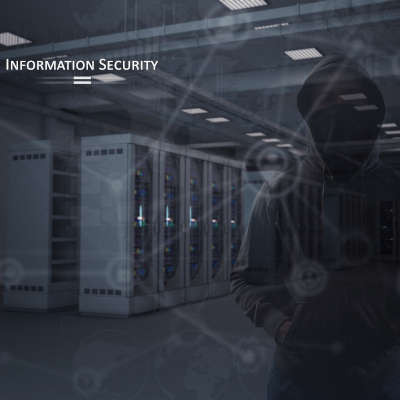The Connection, Inc Blog
You’re on your second coffee, but the gears just aren’t grinding. You know the feeling. Sometimes, it isn’t that you lack motivation, it’s that where you are working isn’t conducive to productivity. A well-optimized workspace, not just in your physical setup, but in your digital organization, can improve productivity and efficiency of tasks immediately.
Shadow IT is no laughing matter, despite its overly theatrical name, as it describes the rogue technology and software being used in your business without being cleared or vetted. While it has always been a problem with in-house operations, the widespread adoption of remote work has made it even more dangerous.
Smartphones are basically the most popular piece of technology ever. They can be used for much of the computing that people deem necessary. It’s no surprise that since they pay over $1,000 for these devices that your employees are going to take them everywhere, including your office. There was a time when employers were horrified by this fact, but today smartphones can just as easily be used for work as they are for distraction.
The COVID-19 pandemic has greatly disrupted daily life, restricting people to their homes and preventing them from going into the office to work. In response, many companies are hurriedly changing over to a remote-capable workforce and having their employees work from home. This strategy can be highly effective, but if a company and its team isn’t careful, it can also be risky.
Why This Matters Now
Many businesses have had no choice but to shut down as “non-essential” businesses are closed. While the definition of an “essential” business varies from place to place, the Department of Homeland Security and the Cybersecurity and Infrastructure Security Agency have provided some general guidelines describing what kind of services should be seen as essential.
This list includes many businesses who could conceivably operate on a remote basis, if they had the internal capabilities. Unfortunately, this often isn’t the most secure option. Let’s review why working from home can be less secure than working in the office, and what you can do to help minimize these effects.
Security Threats for Remote Workers
As you would expect, there are a lot of factors that can serve as a detriment to remote work’s inherent security. This is exacerbated by the fact that there is currently a global health disaster that cybercriminals can use to their advantage:
- The security implemented into the business’ network is no longer protecting the employees and their devices.
- Employees may have more lax security habits when not in the workplace.
- Cybercriminals can shape their attacks and scams to be more convincing in the current climate.
- Many businesses haven’t prepared for this eventuality, and so are lacking the remote strategies that would keep their employees secure.
Therefore, cybercriminals have the opportunity to use many of their favorite tactics to their advantage. Researchers and cybersecurity professionals have seen an uptick in ransomware attacks, remote access tools, and trojans, thanks to cybercriminals using COVID-19 as bait during their phishing attacks by playing off the stress that the coronavirus is causing in many people. It doesn’t help that many remote workers will check their personal emails alongside their professional ones, adding to the chances of a successful attack via their email. Others will pose as the hiring organization itself to swindle remote employees.
To be fair, attackers are also seeing more success in targeting businesses directly, while security is put on the back burner as they focus on their COVID-19 preparedness.
As we mentioned earlier, businesses are also generally ill-prepared for this kind of event, especially those who operate in industries that aren’t commonly associated with remote operations, and whose systems are often outdated and poorly maintained, and/or proprietary in nature and not conducive to remote capabilities. Industries that face particular regulations and certification requirements have another hurdle to clear.
What Can Be Done?
While it is unfortunately going to be a reactive response at this point instead of a proactive measure, businesses can adopt certain solutions that will assist them in securing their remote workers from attack.
- Cloud Solutions - Utilizing the cloud, rather than requiring users to remote into an at-work solution, can prevent an external access point from being created that leads into your network. Simpler to use than remote access and inherently secure, a cloud solution is ideal for remote working. With the opportunity to host software, store data, or some combination of the two, the cloud can enable many of your employees to work completely independently of your network.
- Company Issued Eequipment - With a company-issued device, it becomes a lot easier to ensure that your team has the security solutions and updates you need them to have. While this will require some investment into mobile devices that support your needs, this is a measure with lasting influence on your overall security and productivity.
- Employee Training and Education - Finally, and perhaps most importantly, your employees need to understand that their responsibility for the cybersecurity of the company at large carries over as they are working remotely. Teaching them how crucial security updates are, how to spot phishing attacks, and other preventative measures will make a huge difference.
While the COVID-19 pandemic may be providing businesses with the motivation to put these measures into place now, these measures and other recommended best practices should always be followed. The Connection can help you put them into place whether you’re an essential business or not. Give us a call at (732) 291-5938 to learn more.
It’s not uncommon where a situation arises and you will find yourself working from home. To make this work, it is important that you keep a few additional issues in mind so that you can make the most of it. We have put together a few simple best practices that you should keep in mind as you operate remotely.
There are many reasons that your team may want (or need) to work from home, and there are many reasons to allow them to do so. A 2019 survey by OwlLabs indicated that 71 percent of remote workers are happy with their job (as compared to 55 percent of on-site workers); remote workers responded that they are 13 percent more likely than onsite workers to stay in their current job for five more years than onsite workers will; and when respondents claimed to be working longer than 40 hours per week, onsite workers were doing so out of necessity, while remote workers did so out of desire and enjoyment.
A lot of people aren’t aware that working from home is not a recent innovation. It can arguably be traced back over a million and a half years, when our ancestors would work relatively close to their dwelling places. Throughout our history, work has shifted away and back again to the remote methodology. Let’s look back through the years to see the progression of how people worked, based on the technology that was available.
 As expected, mobile technology is a consistent part of daily business operations for many companies around the world. Employees love taking advantage of the mobility these devices offer, making their home office just as useful as their in-house workstation. However, a mobile device management solution needs to be strictly adhered to in order to optimize security and guarantee that a stray smartphone doesn’t expose your data to unexpected eyes.
As expected, mobile technology is a consistent part of daily business operations for many companies around the world. Employees love taking advantage of the mobility these devices offer, making their home office just as useful as their in-house workstation. However, a mobile device management solution needs to be strictly adhered to in order to optimize security and guarantee that a stray smartphone doesn’t expose your data to unexpected eyes.
News & Updates
Understanding IT
Get the Knowledge You Need to Make IT Decisions
Technology is constantly evolving, and keeping up can feel overwhelming. Whether you want to understand cybersecurity threats, explore automation, or learn how regulations like PCI DSS impact your business, we’ve made it easy to access clear, straightforward insights on key IT topics.
Contact Us
Learn more about what The Connection can do for your business.
The Connection
51 Village CT
Hazlet, New Jersey 07730







